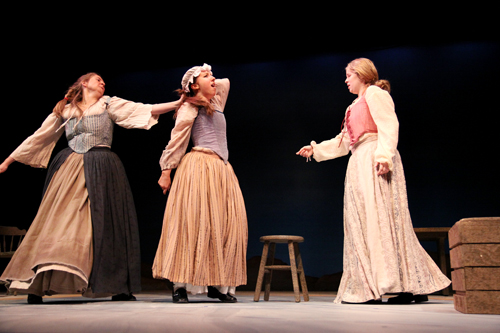Uniting cultures, creating community pride
Portland State University’s Native American Student and Community Center, a project nearly 10 years in the making, will finally open its doors today.
The center, the only facility of its kind in the Portland metropolitan area, will provide academic and social support for Native American students, as well as a forum for cultural exchange between Portland’s Native American community and the community as a whole.
“It makes the Native American community more visible on campus,” said Fannie Black, co-president of the American Indian Science and Engineering Society. “It lets Native American students know that their brothers and sisters are here and available for them on campus.”
Black, who is an Alaska Native, added that when she first moved to Oregon, she didn’t know many Native American students.
An opening ceremony, beginning at 11 a.m. today, will be held at the center, located at the corner of S.W. Broadway and Jackson Street and is open to the public and free of charge.
The ceremony will begin with a grand entry, featuring a Native American Veteran’s Color Guard; drumming; and an invocation by Dee Pigsley, chairperson of the Confederated Tribes of Siletz.
PSU President Daniel Bernstine will then give a welcome speech. He will be followed by several other speakers, including keynote speaker Victoria Vasques, director of Indian education in the U.S. Department of Education. Guided tours of the center will be given, and the event will conclude with a salmon feast.
The center will offer meeting spaces for both students and the community; classroom space for courses on Native American history, culture and art; a computer room; and children’s play area.
“It’s a place where we can hopefully build a pool of knowledge,” said Jade Ungar, a junior mechanical engineering student who has been involved in planning for the center since last year. She added, “It is a way for non-Native students to be exposed to the Native community.”
A collection of artwork by Native American artists is also featured at the center, including a 10-foot-tall bronze statue of Chief Joseph, a famous historical chief of the Nez Perce tribe in Northeastern Oregon; and a “totem” marker at the center’s west entrance.
The original idea for the center began about 1994, with a group of students meeting in 1996 to draft a mission statement and conduct architect focus groups, explained Rose Hill, PSU coordinator of Native American Student Services.
After years of planning the center, the Oregon Legislature approved $1.2 million for the project in November 2001, along with $1 million in bonds supported by student building fees. The project also received sizeable private donations from local philanthropist Jean Vollum and several Oregon tribes.
Architect Donald Stastny, of StatsnyBrun Architects, Inc., who worked on the Oklahoma City Bombing Memorial, was hired to lead the team of designers for the building. The plan features a distinctive, eco-friendly “sky catcher” roof. Construction on the building finally began in April 2002.
Brian EagleHeart, a former business student at PSU who now works as a business credit analyst for Wells Fargo, was one of the students involved in creating the idea for the center in 1996. He continued to assist with the project until its completion.
“It’s unreal,” EagleHeart said of seeing the project finally finished. “I just walked through the other day. It was like a dream.”
He added, “I find it inspiring just knowing what kind of impact it’s going to have on the community. It’s going to become the focal point for the whole Native community.”
EagleHeart also said that he sees the center as a place not just for Native Americans, but for the whole local community to learn about Native culture.
He also hopes that the center will expose Native American children to an academic environment and inspire them to go to college.
“If there’s anything that this project has taught me, it is to persevere and always keep the vision in front of you,” Hill said. “What’s kept us going is that there has been a positive response from the students, community and Portland State.”



